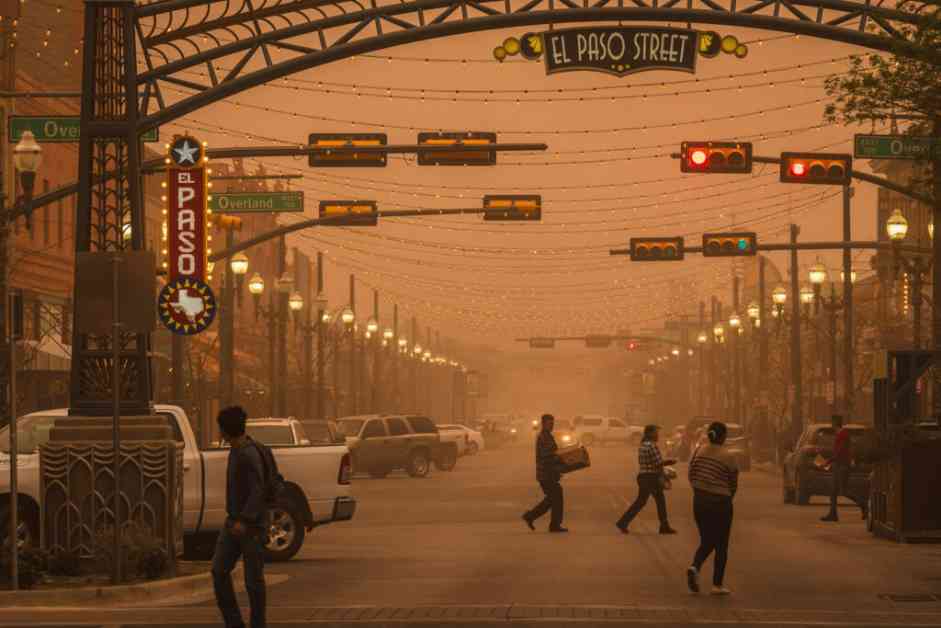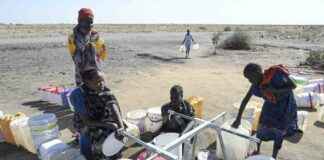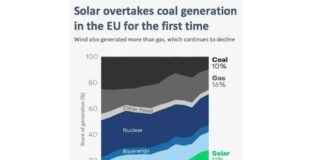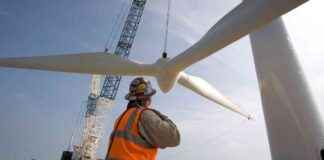Alright, so on a random Tuesday in May, this dude Thomas Gill, who studies earth stuff, was keeping an eye on a bunch of dust cruising through El Paso. He’s a teacher at the University of Texas at El Paso and was wondering if this dusty day would turn into a full-blown dust storm with visibility less than half a mile. Apparently, El Paso has had 10 dust storms this year, which is only behind the Dust Bowl years of the 1930s. According to Gill, the usual number of storms per year is 1.8.
This year has seen 34 days of dust events in El Paso, the most since 1970-71. This guy Gill has been getting calls from reporters all over the place as dust from West Texas blows as far as Des Moines. The combo of windier spring and extreme drought in the Southwest U.S. and Northern Mexico is causing super dusty conditions. Strong winds pick up dry soil and sand, making dust clouds that travel far. A lot of the dust coming into El Paso is from Southern New Mexico and Chihuahua, including dried lakes called playas. And with no rain in sight, the dust situation doesn’t seem to be getting any better.
The concentration of airborne particles during these storms has hit dangerous levels, messing with people’s health. Breathing in this dust is linked to worsened asthma, decreased lung function, and heart attacks in folks with heart issues. Dust means roads closing, sports events getting canned, fatal car accidents, and more hospital visits. Residents in the Borderland region, which includes El Paso, Las Cruces, New Mexico, and Ciudad Juárez, Chihuahua, are used to dust storms, but this year seems extra rough.
Dust storms are happening all over the world, from China to the Middle East to North Africa. In the U.S., they’re most common in the Great Plains and desert Southwest. Drought is a big reason for the dust this year. The whole state of Chihuahua, along with Southern New Mexico and West Texas, is in a drought. Gill mentioned that usual dust sources like the Lordsburg Playa in Southern New Mexico have been active this year. But now, a bunch of native plants dying off is adding to the dust problem. Cattle are so thirsty and hungry that they’re dropping dead on ranches in Chihuahua.
This current drought in Texas has been going on since late 2021 and early 2022, making it longer-lasting than recent short, intense droughts. Between 2022 and 2024, the drought caused about $10.9 billion in damages in Texas. The state climatologist mentioned that the current drought looks like the start of the 1950s drought, which was worse than the Dust Bowl drought. It messed up farming and ranching across Texas and made the state start planning for water better. President Eisenhower even checked out the damage in West Texas in 1957.
Gill said the dust storms in the 1950s were super intense and lasted way longer than they do now. He mentioned some farmer from West Texas saying that chickens and turkeys were dying in the 1950s dust storms from breathing in so much dirt. Not a fun time. The Chihuahuan Desert gets most of its rain during the summer monsoon season in July, August, and September. What they really need is a good, wet monsoon season to wash away the dust.
This year’s dust storms are happening after El Paso’s two hottest summers on record in 2023 and 2024. The higher temps in West Texas make soil evaporate faster, creating more dust during windy times. And with climate change, temperatures are expected to keep going up. The climatologist guy warned that a long drought means more dust is on the way. Dust storms mess up air quality big time, putting people’s health at risk. Air quality stations in El Paso have seen dust levels way over the EPA’s limit. Experts suggest staying indoors during these dusty days or wearing an N95 mask outside.














